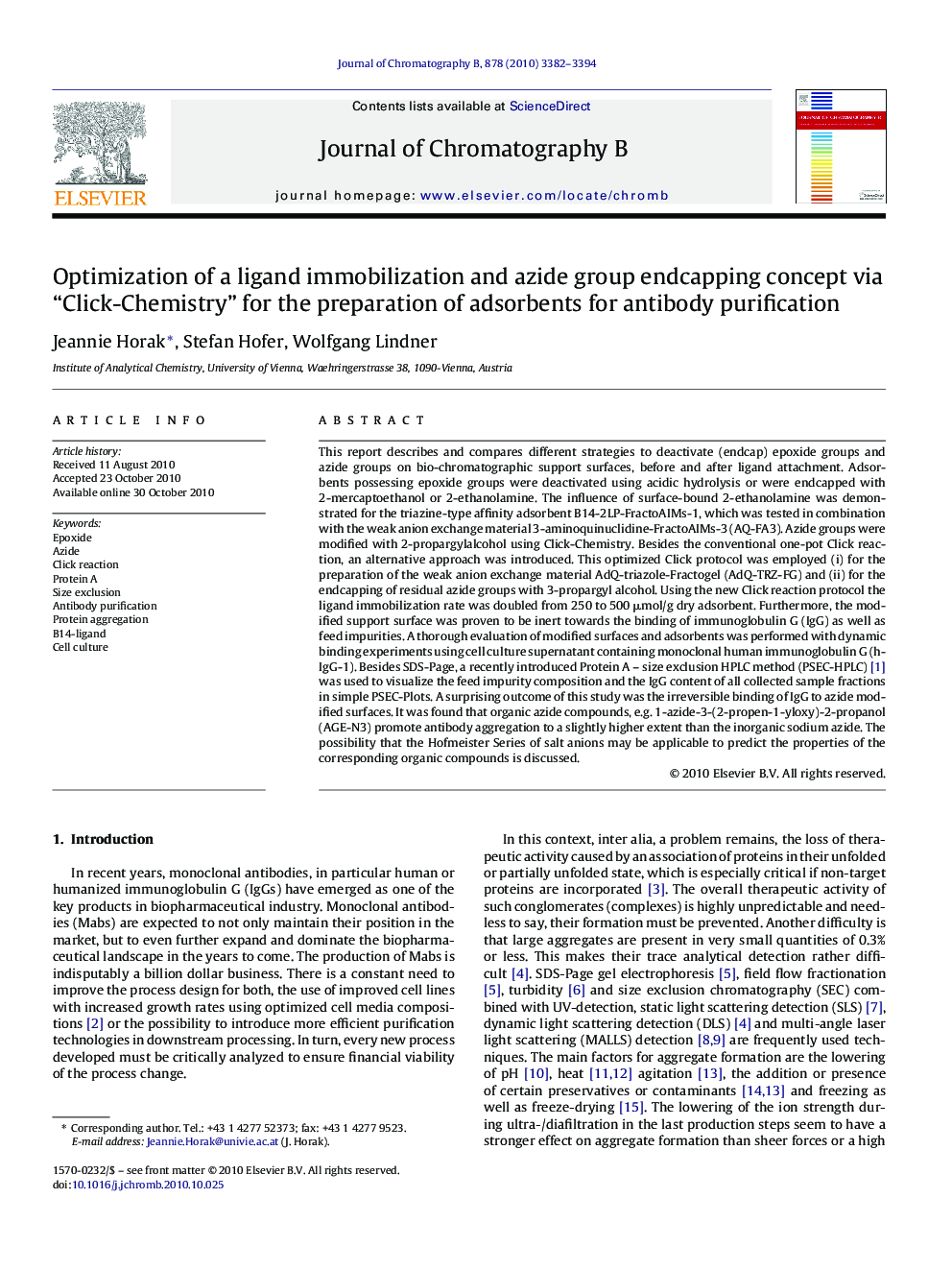| کد مقاله | کد نشریه | سال انتشار | مقاله انگلیسی | نسخه تمام متن |
|---|---|---|---|---|
| 1213968 | 966912 | 2010 | 13 صفحه PDF | دانلود رایگان |

This report describes and compares different strategies to deactivate (endcap) epoxide groups and azide groups on bio-chromatographic support surfaces, before and after ligand attachment. Adsorbents possessing epoxide groups were deactivated using acidic hydrolysis or were endcapped with 2-mercaptoethanol or 2-ethanolamine. The influence of surface-bound 2-ethanolamine was demonstrated for the triazine-type affinity adsorbent B14-2LP-FractoAIMs-1, which was tested in combination with the weak anion exchange material 3-aminoquinuclidine-FractoAIMs-3 (AQ-FA3). Azide groups were modified with 2-propargylalcohol using Click-Chemistry. Besides the conventional one-pot Click reaction, an alternative approach was introduced. This optimized Click protocol was employed (i) for the preparation of the weak anion exchange material AdQ-triazole-Fractogel (AdQ-TRZ-FG) and (ii) for the endcapping of residual azide groups with 3-propargyl alcohol. Using the new Click reaction protocol the ligand immobilization rate was doubled from 250 to 500 μmol/g dry adsorbent. Furthermore, the modified support surface was proven to be inert towards the binding of immunoglobulin G (IgG) as well as feed impurities. A thorough evaluation of modified surfaces and adsorbents was performed with dynamic binding experiments using cell culture supernatant containing monoclonal human immunoglobulin G (h-IgG-1). Besides SDS-Page, a recently introduced Protein A – size exclusion HPLC method (PSEC-HPLC) [1] was used to visualize the feed impurity composition and the IgG content of all collected sample fractions in simple PSEC-Plots. A surprising outcome of this study was the irreversible binding of IgG to azide modified surfaces. It was found that organic azide compounds, e.g. 1-azide-3-(2-propen-1-yloxy)-2-propanol (AGE-N3) promote antibody aggregation to a slightly higher extent than the inorganic sodium azide. The possibility that the Hofmeister Series of salt anions may be applicable to predict the properties of the corresponding organic compounds is discussed.
Journal: Journal of Chromatography B - Volume 878, Issue 32, 15 December 2010, Pages 3382–3394